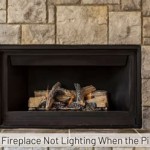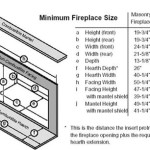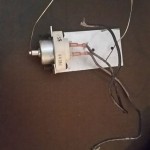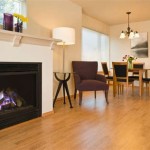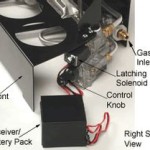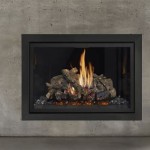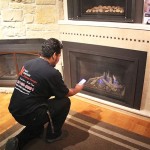How to Decorate a Fireplace: A Comprehensive Guide
The fireplace, traditionally the heart of the home, remains a focal point in many living spaces. It provides warmth, ambiance, and a natural gathering place. Decorating the fireplace, therefore, demands careful consideration to enhance its aesthetic appeal and integrate it seamlessly within the overall design scheme. This article offers a comprehensive guide to decorating a fireplace, exploring key aspects from stylistic choices to practical considerations.
Selecting a Decorating Style
The first step in decorating a fireplace involves defining a suitable style. This selection should complement the existing interior design and reflect personal preferences. Several popular styles are commonly employed in fireplace decoration, each with distinct characteristics.
Traditional Style: Traditional fireplace decoration typically incorporates classic elements such as ornate mantelpieces, symmetrical arrangements, and polished finishes. Materials like marble, wood, and brick are frequently used. Decorative items often include antique clocks, candelabras, framed portraits, and floral arrangements. The emphasis is on creating a sense of formality and timeless elegance.
Modern Style: Modern fireplace decoration favors minimalism and clean lines. The focus is on simplicity and functionality. Materials like concrete, steel, and glass are often incorporated. Decorative items are kept to a minimum, typically featuring abstract sculptures, geometric patterns, and monochrome color palettes. The goal is to create a sleek and contemporary look.
Rustic Style: Rustic fireplace decoration embraces natural materials and a sense of warmth and comfort. Stone and wood are prominent features, often left in their raw or slightly aged state. Decorative items may include antlers, woven baskets, vintage tools, and earthy-toned textiles. The emphasis is on creating a cozy and inviting atmosphere.
Eclectic Style: Eclectic fireplace decoration combines elements from different styles to create a unique and personalized look. This approach allows for greater freedom and creativity. The key is to ensure that the various elements are cohesive and harmonious. Mixing and matching different textures, patterns, and colors can result in a visually interesting and dynamic fireplace design.
Coastal Style: Coastal fireplace decoration evokes a sense of the seaside. Light and airy colors, such as blues, whites, and sandy beiges, are commonly used. Decorative items may include seashells, driftwood, nautical-themed artwork, and rope accents. Materials like shiplap and weathered wood are frequently incorporated to enhance the coastal aesthetic.
Key Elements of Fireplace Decoration
Once a style has been chosen, specific elements can be considered to enhance the fireplace's aesthetic appeal. These elements work together to create a cohesive and visually pleasing design.
Mantel Decoration: The mantelpiece is a primary area for decorative displays. Its surface provides a platform for showcasing various items, such as artwork, photographs, vases, and sculptures. The scale and arrangement of these items should be carefully considered to avoid clutter or an unbalanced appearance. A central focal point, such as a large mirror or a statement piece of art, can anchor the mantel display. The height of the items should vary to create visual interest and prevent a monotonous look.
Hearth Design: The hearth, the area in front of the fireplace opening, offers an opportunity to enhance the overall design. It can be made from stone, brick, tile, or other materials. The choice of material should complement the surrounding décor and provide a durable and heat-resistant surface. Decorative elements, such as fire tools, log holders, and hearth rugs, can be added to enhance both functionality and aesthetics. The size and shape of the hearth should be proportionate to the fireplace and the surrounding space.
Surround Material: The fireplace surround, the area immediately around the firebox, significantly impacts the overall look of the fireplace. Common materials include brick, stone, tile, and wood. The choice of material should be based on the desired style and the existing design elements of the room. Consider factors such as color, texture, and pattern when selecting the surround material. A contrasting surround can create a dramatic focal point, while a complementary surround can blend seamlessly with the surrounding décor.
Artwork Selection: Artwork can play a significant role in fireplace decoration. A large painting or print can serve as a focal point above the mantel. Alternatively, a gallery wall with multiple smaller pieces can create a more dynamic and personalized display. The style, color, and subject matter of the artwork should complement the overall décor of the room. Consider the scale of the artwork in relation to the size of the fireplace and the surrounding space. The artwork should be securely mounted to prevent accidents.
Lighting Considerations: Lighting is crucial for highlighting the fireplace and creating a warm and inviting atmosphere. Options include sconces mounted on either side of the fireplace, recessed lighting above the mantel, and floor lamps placed nearby. The type of lighting should be chosen to complement the overall style of the room. Dimmable lights can provide flexibility in adjusting the ambiance. Consider the color temperature of the light bulbs to create a warm and inviting glow. Properly positioned lighting can accentuate the textures and colors of the fireplace materials.
Practical Considerations for Fireplace Decoration
Beyond aesthetics, practical considerations are essential for ensuring safety and functionality when decorating a fireplace. These considerations include fire safety, maintenance, and space planning.
Fire Safety: Fire safety is paramount when decorating a fireplace. Ensure that combustible materials, such as curtains, rugs, and furniture, are kept a safe distance from the fireplace opening. Use a fire screen to prevent sparks and embers from escaping. Regularly inspect the chimney for obstructions and creosote buildup. Install and maintain smoke detectors and carbon monoxide detectors in the vicinity. Never leave a fire unattended. Store firewood safely away from the fireplace to prevent accidental ignition.
Maintenance and Cleaning: Regular maintenance and cleaning are essential for keeping the fireplace looking its best and functioning properly. Clean the firebox regularly to remove ash and soot. Inspect the chimney for cracks and damage. Clean the mantel and hearth to remove dust and debris. Use appropriate cleaning products for the materials used in the fireplace surround. Consider hiring a professional chimney sweep to inspect and clean the chimney annually. Proper maintenance can extend the lifespan of the fireplace and prevent costly repairs.
Space Planning: The placement of furniture and accessories around the fireplace should be carefully planned to create a comfortable and functional space. Avoid placing furniture directly in front of the fireplace to prevent obstruction of the heat and the view. Arrange seating to encourage conversation and create a cozy gathering area. Consider the flow of traffic around the fireplace to ensure easy access. Use rugs to define the seating area and add warmth and texture to the space. Avoid overcrowding the area with too much furniture or accessories. A well-planned space will enhance the enjoyment of the fireplace.
Seasonal Decorations: Fireplace decoration can be adapted to reflect the changing seasons. During the fall, incorporate elements such as pumpkins, gourds, and autumn leaves. During the winter, add festive decorations such as garlands, wreaths, and stockings. During the spring, incorporate fresh flowers and greenery. During the summer, display seashells, nautical-themed items, or other summery accents. Seasonal decorations can add a touch of cheer and personality to the fireplace and create a festive atmosphere.
Personalization: While style and design principles are important, the most successful fireplace decoration will reflect the homeowner's personal taste and interests. Incorporate items that have sentimental value, such as family photos, travel souvenirs, or handmade crafts. Display collections of objects that reflect personal hobbies or interests. Choose colors and patterns that resonate with personal preferences. The goal is to create a space that feels comfortable, inviting, and uniquely personal.
By considering these factors, homeowners can create a fireplace that is not only visually appealing but also functional, safe, and reflective of their individual style. Thoughtful decoration transforms the fireplace from a mere architectural element into a cherished focal point within the home.

36 Fireplace Decor Ideas Modern Mantel

Simple Cozy Fall Fireplace Decor Ideas Sprucing Up Mamahood

Chic On A Shoestring Decorating How To Decorate Fireplace Simple Tips

40 Best Fireplace Décor Ideas Mantel

Cozy Winter Fireplace Decor Essentials She Gave It A Go

My Spring Fireplace Mantel And Hearth Worthing Court Diy Home Decor Made Easy

My Fall Mantel Decor With Joann Bless This Nest

How To Decorate A Hearth Honeybear Lane

How To Decorate A Fireplace Mantel

10 Fireplace Mantel Decorating Ideas Full Service Chimney

